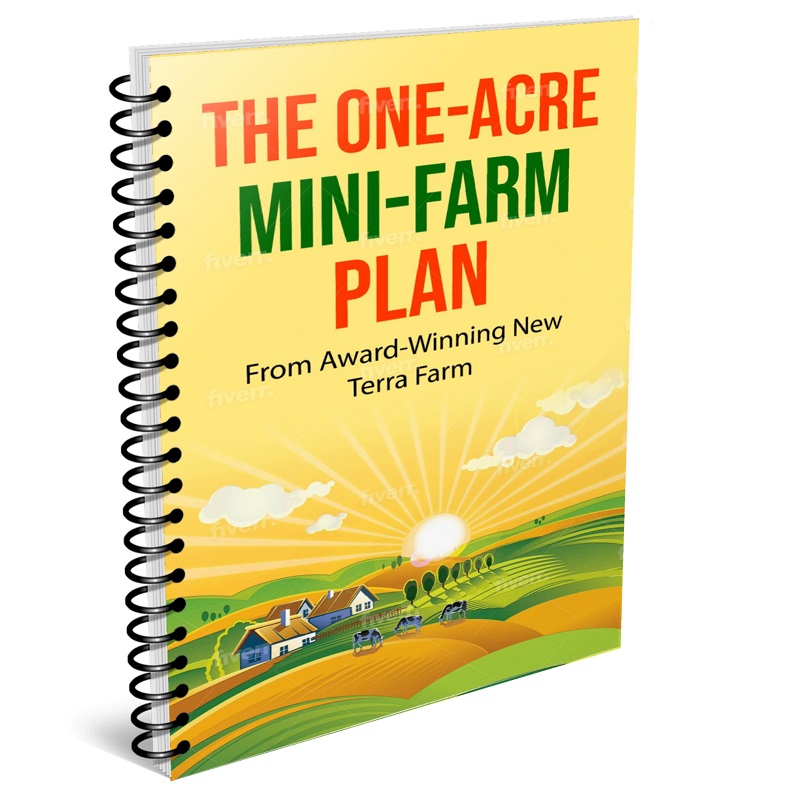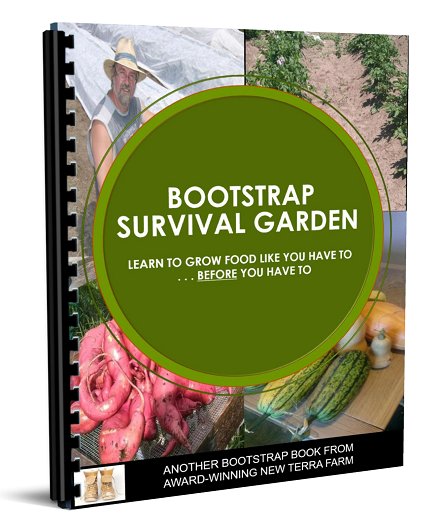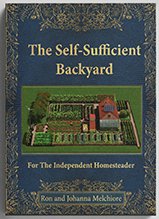Planning A Survival Garden
Planning a Survival Garden is part of a series of articles about how to deal with coming 'tough times', from the perspective of (what should be) our top priority - ensuring we have enough food.
Every activity of any consequence needs to start with planning; the first step in planning is setting the objective. In planning a survival garden the objective is to provide enough food for subsistence eating, on an on-going basis.
Yes, I'm aware that you can supplement this with stored goods or by hunting or fishing (you can bet I'll try to knock down a deer or two every fall) but eventually your stores will run out, and areas can be hunted-out, especially if every man-jack and his sister is out there in camo when the food runs short.
So let's plan on your garden being the key to long-term survival.
What I want to do in this article is provide a reality check for you when planning a survival garden. It's hard to fully test your preparations before the crisis actually hits, but you can do a little analysis to see you are really as prepared as you think you are.
First, lets identify our assumptions. In other words, which particular set of circumstances are we planning a survival garden for? And, what is the time scale we're working with?
I can't describe my vision of the near-future any better than John Michael Greer in
The Archdruid Report:
"Get past the fantasies of sudden collapse on the one hand, and the fantasies of limitless progress on the other, and what you get is what we’re getting—a long ragged slope of rising energy prices, economic contraction, and political failure, punctuated with a crisis here, a local or regional catastrophe there, a war somewhere else—all against a backdrop of disintegrating infrastructure, declining living standards, decreasing access to health care and similar services, and the like, which of course has been happening here in the United States for some years already”.
In other words, more of what we're experiencing right now, on an increasingly-downward slope. Barring a currently-unforeseen major catastrophe, I think we will sputter along without current systems becoming completely unreliable for a while yet; maybe 5 years, certainly not more than 10. But it will become increasingly hard to find basic resources, and they may become much more expensive.
And one of my visitors last week made this point very well (thanks, Liz):
“Once the "bottom falls out", many will try to begin growing gardens. That will probably put a strain on the suppliers of seeds and plants. With the increase in demand, the prices will skyrocket! We'll no longer be able to afford to grow out own food from store-bought seeds and plants. Right now, many of us are dependent upon our local co-ops to start our gardens”.
So you see how these assumption shape our planning. Using the above scenario, I going to assume we not only need to provide the major part of our food supply from our garden, we also need to assure a way to re-plant that doesn't depend on traditional commercial seed suppliers or nurseries. And, since in most places the 'eating season' is longer than the 'growing season', we also need to find a way to stretch our food supply to provide 12 months of food a year.
The above assumptions make crop choice critical to planning a survival garden. The factors I consider when planning my market garden are not too different from the survival garden. When making crop choices I consider:
- yield,
- nutrition, and
- store-ability
To that I would add repeatability i.e. the ability to replant from our own stores.
This gives us the parameters for planning a survival garden. What might that garden look like?
The Prototype Survival Garden
A 'prototype' is a model intended to display the characteristics of the final product to allow testing. I'm going to use the prototype survival garden I describe here to test the feasibility of growing a 12-month food supply and being able to repeat that indefinitely. In other words, that reality check.
Given all the above, the traditional 'three sisters' – corn, beans, and squash - are not a bad place to start planning a survival garden. They meet all the criteria above, and can be grown in most places. To that I would add potatoes as another crop that can be grown almost anywhere, stores well, can be replanted from your own stock, and that yields a lot of food.
Remember I'm not suggesting this would be all you might grow, but it gives us a starting place for planning and our reality check.
Here's my other planning conditions:
- We need to provide 2000 calories per day per person.
- We get 25% of our calories from each of the four crops listed
- My prototype garden is laid out in 50-foot by 5-foot beds (3ft of growing area and 2-ft paths between)
- We can achieve and maintain average yields comparable to those shown below, which are taken from my own records and a couple good reference books.
I'm a spreadsheet kind of guy, so here's how this works out when I plugged in the numbers:
| 2000 cals per day |
25% equals |
lbs/day |
lbs/year |
feet row/year |
| Dried beans yield 10lb per 100ft of row @ 2000 cals/lb |
500 |
0.25 |
91 |
913 |
| Dried corn yields 20lb per 100ft of row @ 1800 cals/lb |
500 |
0.28 |
101 |
507 |
| Potatoes yield 150lb 100ft of row @ 450 cals/lb |
500 |
1.11 |
406 |
270 |
| Winter squash yields 350lb 100ft of row @ 250 cals/lb |
500 |
2.00 |
730 |
209 |
|
|
|
|
|
|
|
| assume 5-foot beds (3 foot growing area with 2-foot paths) |
|
|
|
|
|
|
ft of bed needed |
# 50-ft beds |
sq ft needed |
|
| Beans @ |
4 |
rows/bed |
228.1 |
4.6 |
1141 |
|
Corn @ |
4 |
rows/bed |
126.7 |
2.5 |
634 |
|
| Potatoes @ |
2 |
rows/bed |
135.2 |
2.7 |
676 |
|
| Squash @ |
0.5 |
rows/bed |
417.1 |
8.3 |
2086 |
|
|
|
|
|
TOTAL SQ FT |
4536 |
|
You could make substitutions e.g. sweet potato for the squash (more vitamin C and A, more calcium) but this wouldn't affect the calculation much (more calories per pound but fewer pounds yield).
So what lessons can we learn from this? First, note that this prototype garden requires more than 4,000 square feet per person to provide a minimal diet. And this is not taking into account the need to maintain soil fertility by growing cover crops or allowing the soil to rest for (minimum) 1 year out of three.
Second, there is no 'spare capacity' here; 2000 calories a day is not a lot, especially if you are maintaining a large garden using mainly hand tools. There is no extra for trade, and you are one crop failure away from slow starvation.
I think that, realistically, a family of four would need no less than 3/4 of an acre or 30,000 square feet to grow all they need. Personally, I'm planning on a full acre to feed Suzie and I, our two (grown-up) kids and their 'significant others'- i.e. 6 people. I have other land I can use for my goats, chickens, ducks and pigs (more about that in coming articles) but that's my garden plan.
I know people have grown amazing amounts of food on less land than that e.g.
the Urban Homestead but I don't know of any that are growing all their own food, and permaculture designs such as this take years if not decades to establish. In other words, if you haven't started yet, you can't get there in time to save you.
So what do you do if you have less land than this e.g. you are in an urban area? A postage-stamp size back yard is NOT going to feed you. I would suggest the minimum size plot to be worth your time and effort is about 1,000 square feet.
According to Dmitry Orlov in 'Reinventing Collapse' many Russian families managed to survive the collapse of the Soviet Union the help of a standard garden plot of one sotka which is 100 square meters, or 1076 square feet. A plot this size this would certainly let you supplement your diet, and could be the difference between 'making it' and not.
If you don't own that much land, find access to it. Work with your neighbours and do a land survey to find land that can be used to grow food crops.
And if you can't be a grower, support one. Form relationships with local growers at farmer's markets or through a CSA. Start now, because it will only get harder.
Get my FREE One-Acre Farm Plan and learn how to raise pigs, chickens and more, integrated with an organic market garden, to
make more money from your small property.
Imagine building a profitable and sustainable mini-farm even on a small piece of land.
More like Planning a Survival Garden . . .
In this article, we'll cover the best long-term survival foods that will keep you nourished and sustained in the face of adversity.
Cheap survival food ideas and a few recipes that are actually practical and useful
Some points and priorities for your small farm survival plan
Why you need a food storage and survival plan for the parlous times ahead
Build a smart, layered food storage plan for emergencies, prepping, and long-term survival. Discover how to stockpile food the right way for every situation
Business as usual may not be usual much longer. Grow a survival garden to ensure your family food supply
Bootstrap Survival Garden will show you step-by-step how to build a grow, harvest and save food in your own Bootstrap Survival Garden.
We include plans, pictures and instructions for 10 garden designs that can be adapted to just about any property. Check out Bootstrap Survival Garden here. Or get Bootstrap Survival Garden as part of my Bootstrap Book Bundle and save almost 50%.
If you would rather build it than buy it, this is for you
I didn't write this one, but it's an excellent resource for the homesteader or small property owner anyway! The Self-Sufficient Backyard has literally hundreds of plans and practical tools and techniques for the serious homesteader.Written by a couple who have actually done the work. From growing food, to medicinal herbs, solar electricity, root cellaring, growing small livestock, and selling select produce as a side hustle, plus many more money-saving and money-making ideas, this book is an encyclopedia of growing and building knowledge. A must-have in your homestead library. I only write about topics I have personal experience with. The authors of The Self-Sufficient Backyard have done the same. Highly recommended!
-
Home Page
›
-
Farm Survival Plan
›
-
Planning a Survival Garden
|





